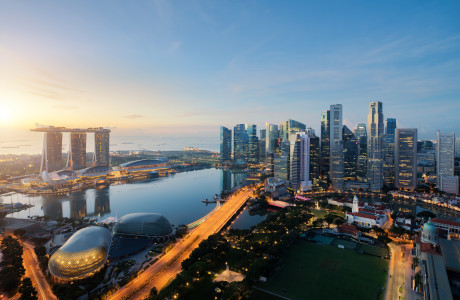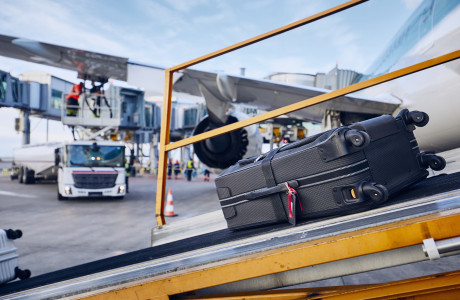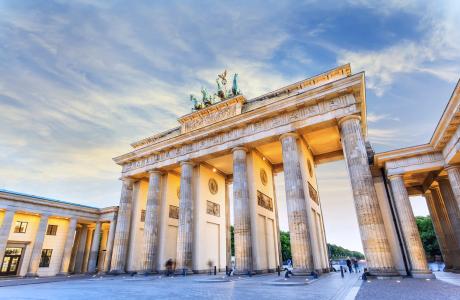
Berlin's Airports: Info & Insights
Berlin's airports not only offer a gateway to the world, but also a piece of German history. But how many airports does Berlin have? How long was the construction period at Berlin Airport and how much did it cost? And what exactly do Berlin Tegel and Berlin Tempelhof have to do with the Berlin Airlift? We give you an overview.
Berlin's airports at a glance
Quite correctly, since 2020, we should be talking about only one (active) Berlin airport: the Berlin Brandenburg "Willy Brandt" Airport (BER). For other airports in Berlin, however, you only have to look a little way into the past. Berlin Tegel and Schönefeld airports were closed relatively recently. Many people are also familiar with Tempelhof Berlin Airport. Where BER Berlin has made a name for itself due to its multi-billion construction costs, other airports and airfields have a firm place in history for a different reason: the Berlin Airlift is the keyword here.
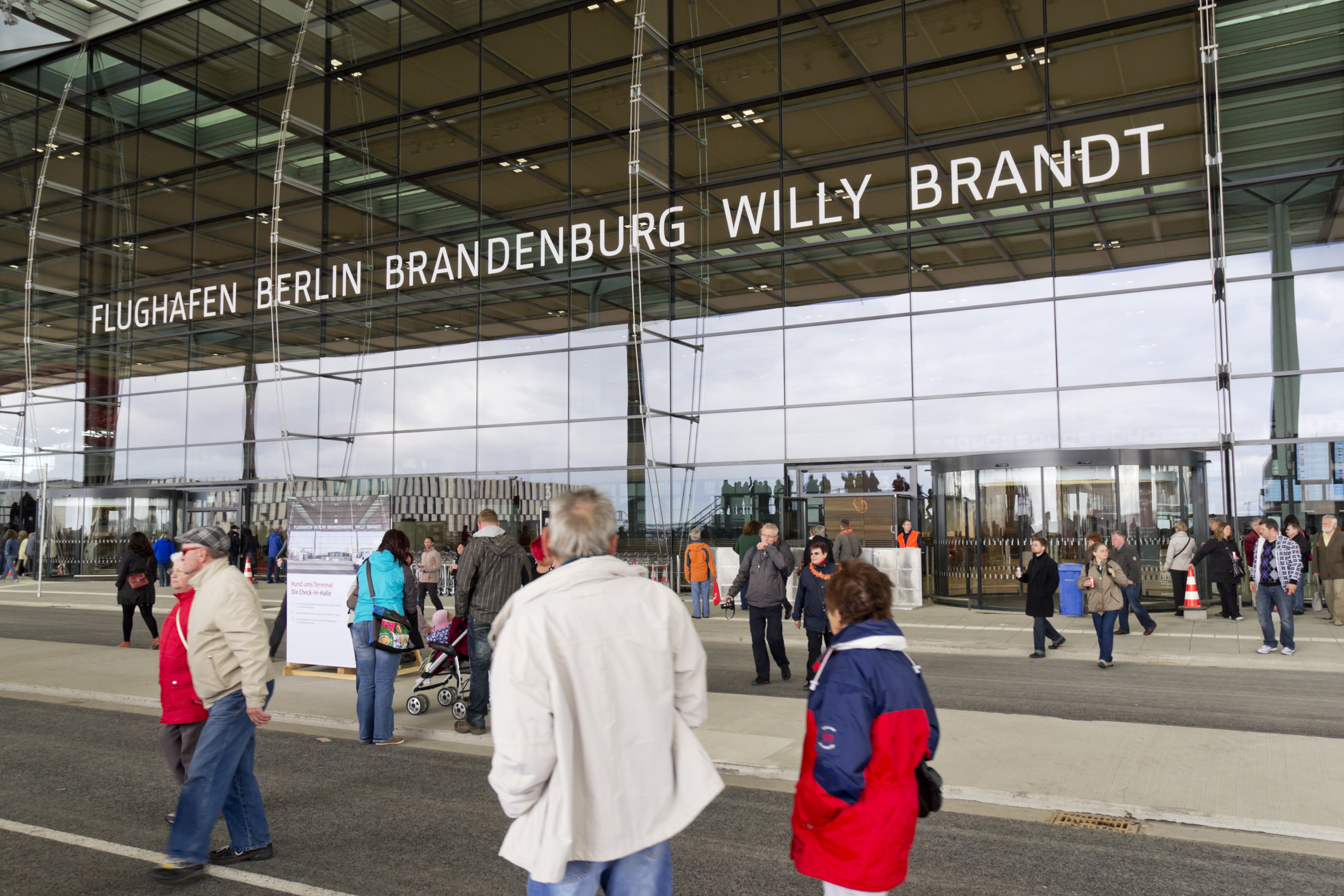
Berlin Brandenburg Airport
Berlin Brandenburg Airport has the nickname "Willy Brandt" and is also unofficially known simply as Berlin Airport or Airport Berlin. It is located south of Berlin's city limits in the neighbouring state of Brandenburg and was built in the immediate vicinity of Berlin Schönefeld Airport. Since 2020, it has been the only airport in Berlin. Shortly after the reunification of Germany, it was decided that Berlin should have a central airport. Berlin Brandenburg Airport was thus to replace the existing airports in Tempelhof, Tegel and Schönefeld. A section of the former Schönefeld Airport was integrated into BER Berlin - Terminal 5. Since the opening of the new Capital Airport, it has functioned exclusively as a terminal for government flights. The Federal Chancellor and his ministers take off from here. Civilian flights for the general public from Berlin Airport take travellers to continental and intercontinental destinations.
Due to its particularly long construction period, which began in September 2006 and ended in October 2020, Willy Brandt Airport gained a reputation as one of the longest construction projects in Germany. Contrary to the 14-year construction period, the actual opening of the new Berlin airport was already planned for November 2011. Faulty construction planning, lack of construction supervision and technical deficiencies were the reason that the opening had to be postponed a total of seven times. In total, the costs for the construction of BER Berlin amount to an estimated six to seven billion euros - making the total sum about three times higher than planned.
Berlin Schönefeld Airport
Alongside Tempelhof and Tegel, Berlin Schönefeld Airport was part of the Berlin airport ensemble. After the Second World War, Schönefeld Airport was the central airport of the GDR. Schönefeld was in operation until the end of October 2020 - from now on it will be replaced by Berlin Brandenburg Airport. Well-known low-cost airlines such as EasyJet and Ryanair took over numerous national and international routes, e.g. to London or Düsseldorf-Weeze. The establishment of easyJet was particularly significant for Berlin Schönefeld Airport. Schoenefeld Airport became the second largest easyJet base in Europe. In the heyday of the low-cost airlines, Schönefeld Airport was literally bursting at the seams, but its operation at capacity ran for years without any major disruptions or problems. That's why Berlin Schönefeld, with its low-cost flight offerings, enjoyed great popularity, and not only among Berliners.
Berlin Tegel Airport
Berlin Tegel Airport handled passengers in Germany's capital together with Berlin Schönefeld Airport until November 2020. In order to share the traffic efficiently, Tegel airport was located in the north-western part of Berlin, while Schönefeld covered the south-eastern area. Shortly before the airport closed, Tegel had the fourth highest passenger volume in Germany behind Frankfurt, Munich and Düsseldorf airports. Even though Berlin's Tegel airport has been closed for civilian travel, the northern part still exists as a military helipad. There are also plans for the future of the other vacant terminals: for example, an industrial and research park is to be built under the name "Berlin TXL - The Urban Tech Republic". The Berlin University of Applied Sciences and the Berlin Fire Brigade are just two examples of possible users. Thus Berlin Tegel, an airport in transition.
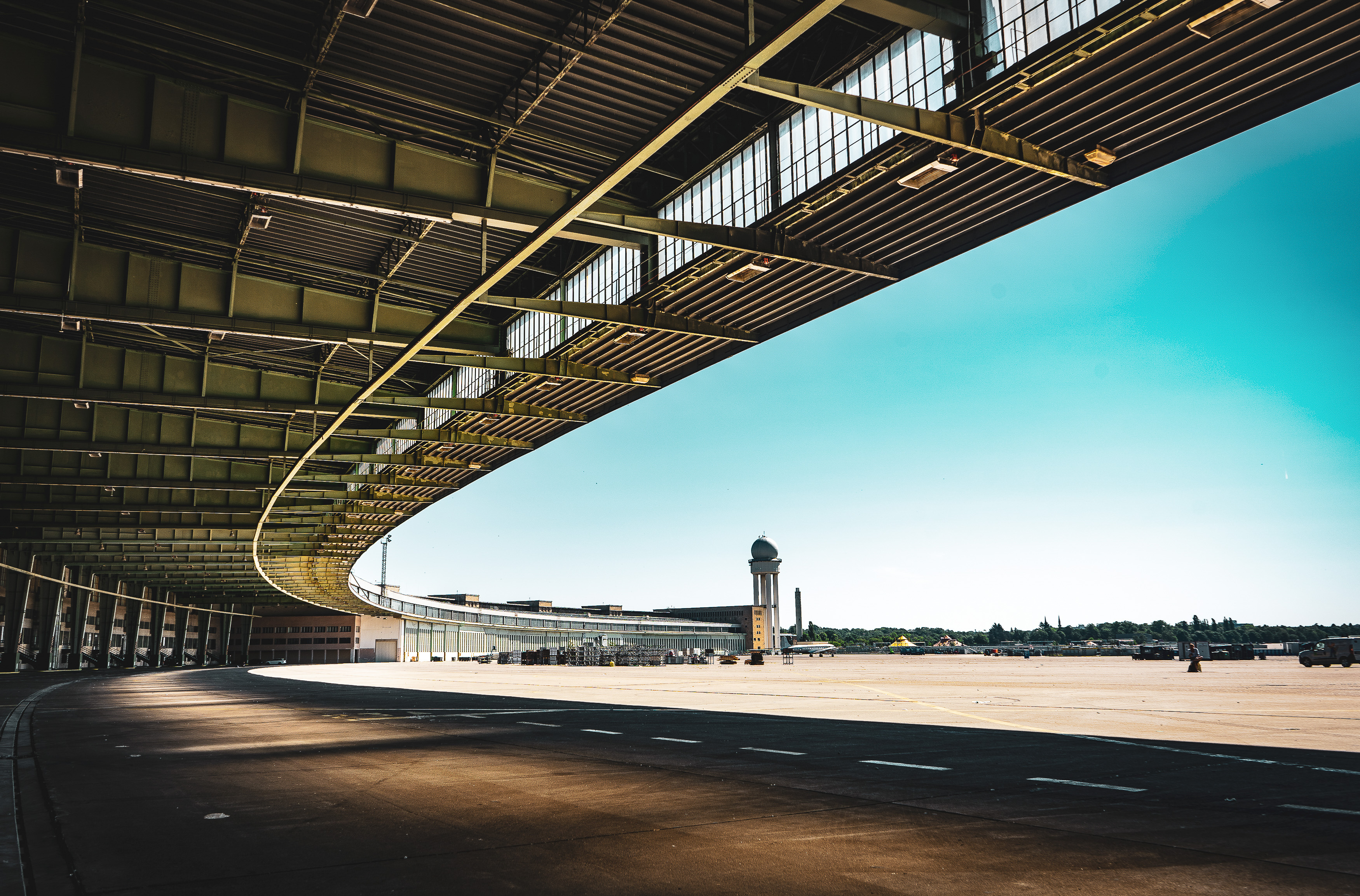
Berlin Tempelhof Airport
Berlin's former central airport was one of the first commercial airports in Germany when it opened in 1923. Alongside Berlin Tegel and Schönefeld airports, Tempelhof Airport handled the international passenger volume in the greater Berlin area until its closure in 2008. Two years after its closure, Tempelhof Airport was opened to the public. Since then, the site and the vacant buildings have been used for numerous purposes - as a trade fair site, for sporting events or for refugee accommodation. Berlin's Tempelhof Airport has also made a name for itself as a sought-after film set. Blockbusters such as The Bourne Conspiracy (2004), Berlin Airlift (2005), Valkyrie (2007), The Hunger Games - Mockingjay Part 1 (2014) and The Hunger Games - Mockingjay Part 2 (2015) found their cinematic backdrops here, causing a sensation internationally.
Berlin Airlift
The Berlin airports have a special significance in German history. What is meant here is the Berlin Blockade and the Airlift of the Western Allies, which supplied the people of what was then West Berlin with food, medicine and nappies from 24 June 1948 to 12 May 1949. The Berlin Blockade was imposed by the Soviet Union, i.e. all roads, railway lines and rivers to West Berlin were blocked. This was to put pressure on the Western Allies to give up West Berlin and for it to fall back to the Soviet Union. More than two million people were thus suddenly cut off from the outside world. Via the airfields Berlin Tempelhof, Tegel and Gatow, supplies were now delivered by air - the Berlin Airlift. After almost a year, the Soviet Union gave up and ended its blockade. During the airlift, the U.S. AirForce and its "sultana bombers" achieved legendary status throughout Germany, a status that remains unbroken to this day. The Berlin Airlift has become a symbol of German-American friendship. To this day, older generations of Berliners think back to the American pilots who airlifted the children of West Berlin with chocolate bars thrown from the planes on little parachutes.
Sights in Berlin - Insider Tips
Berlin is worth a visit every time. But what other highlights does the state capital have besides the Brandenburg Gate, the TV Tower and the Bundestag? We reveal three insider tips:
Bathing fun on a ship
Despite being a metropolis, Berlin provides plenty of opportunities to cool off in the summer. Whether Wannsee or Müggelsee - there's something for everyone. But do you already know the bathing ship in Alt-Treptow? Following the tradition of old river swimming baths of the 18th century, the push barge lying in the Havel serves as a floating bathing establishment. As if this were not special enough, the bathing ship lets visitors admire the panoramic view of the Spree, the Oberbaum Bridge and the TV Tower.
Lost Places
Not far from the capital, about an hour by car, are the Beelitz healing sites. Built between 1898 and 1930, the workers' lung sanatoriums were among the largest hospital complexes in the Berlin area. During the First and Second World Wars, the Beelitz sanatoriums served as reception centres for sick and wounded soldiers. The sanatoriums were still in active use until 1994 - it was also known as the largest military hospital of the Soviet or Russian army abroad. After years of stagnation and decay, the first treetop trail in Brandenburg was opened on the grounds in 2015. Not only in the air, but also on the ground: Those who want to take a look inside the Beelitz healing sites can join a guided tour.
An abandoned amusement park
Anyone interested in abandoned places in Berlin and the surrounding area will be thrilled by the Spreepark. Spreepark Berlin, then called Kulturpark Plänterwald, was the only amusement park in the GDR to attract around 1.7 million visitors a year. After the fall of communism, the numbers collapsed and the amusement park had to file for insolvency. Since then, the area lay fallow - until 2014. The state of Berlin plans to reopen the Spreepark as an art and culture park by 2026. You can explore the area on guided tours and learn more about the Spreepark's past and future.
Berlin and Berlin Airports always have exciting things to offer, both historically and currently. We wish you a good flight in advance for your next trip to or from Berlin!

